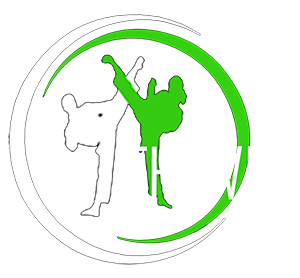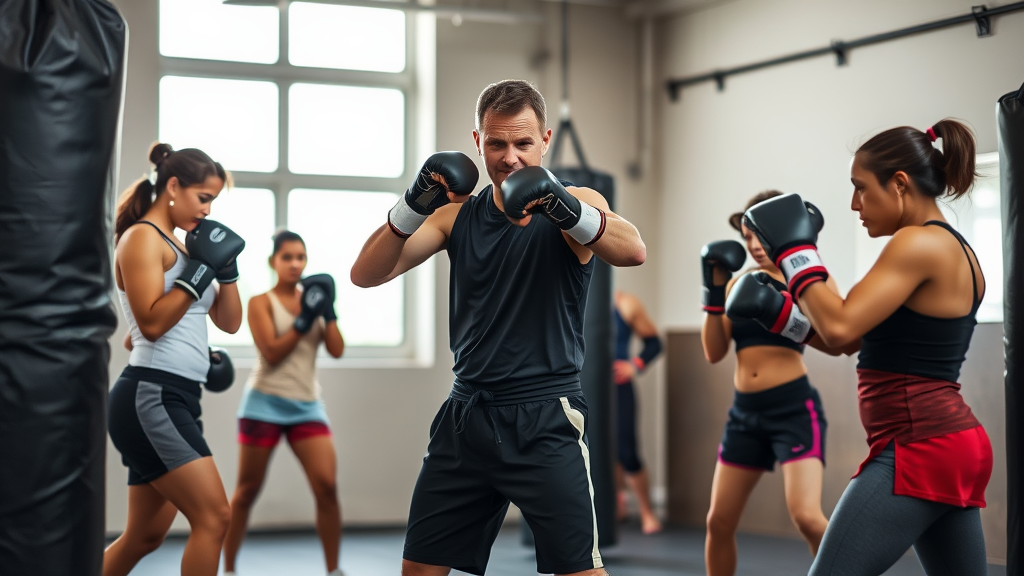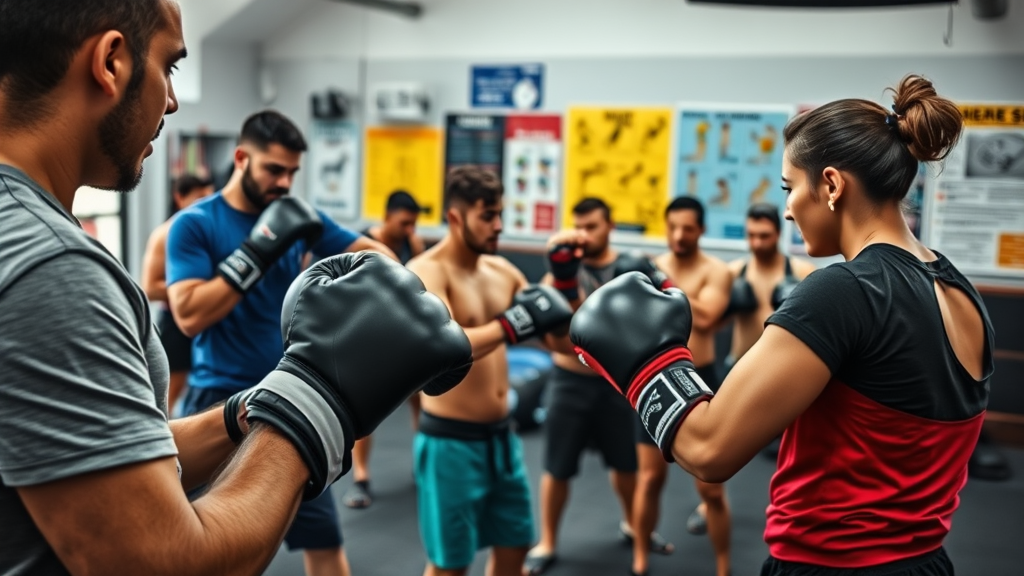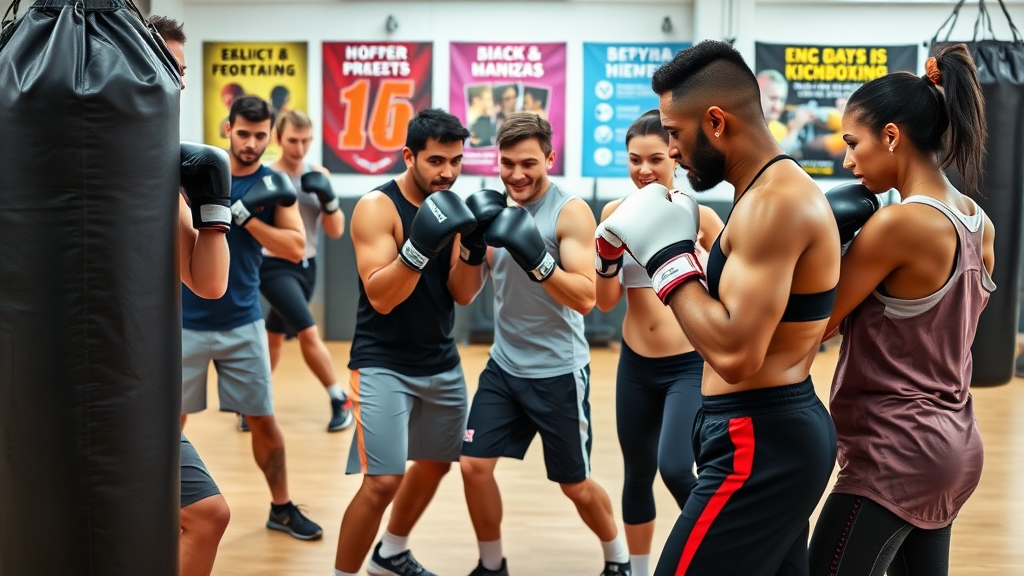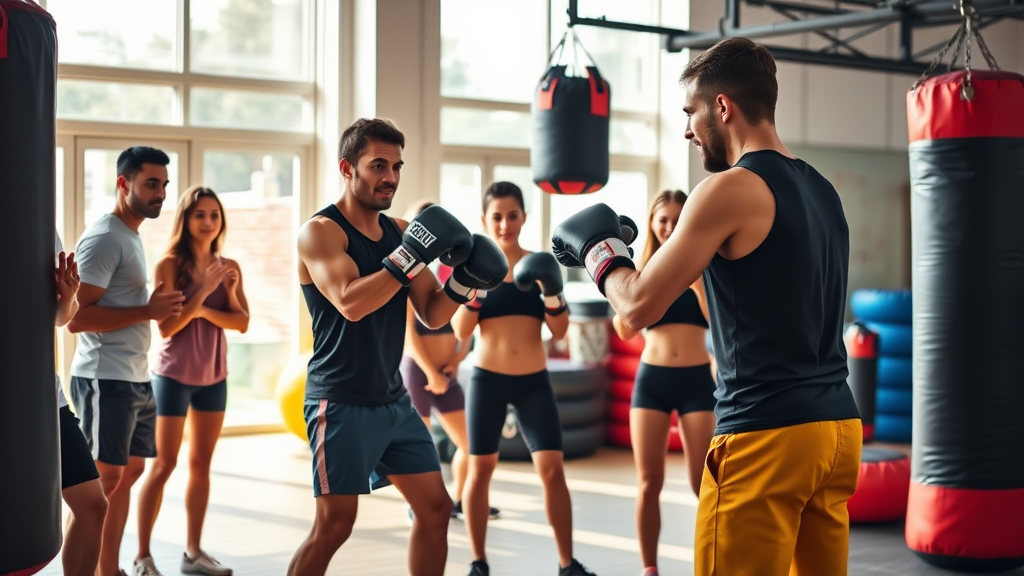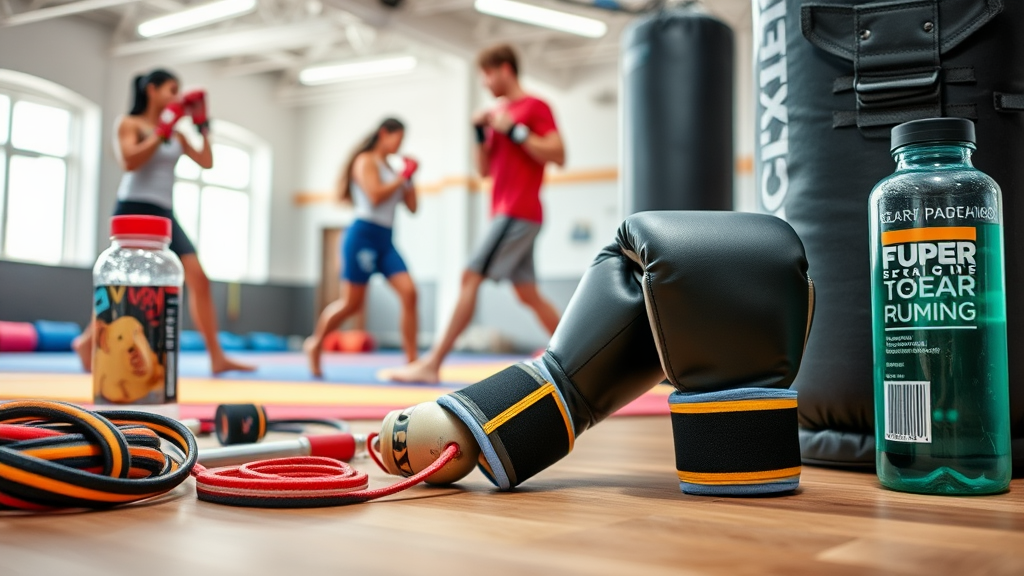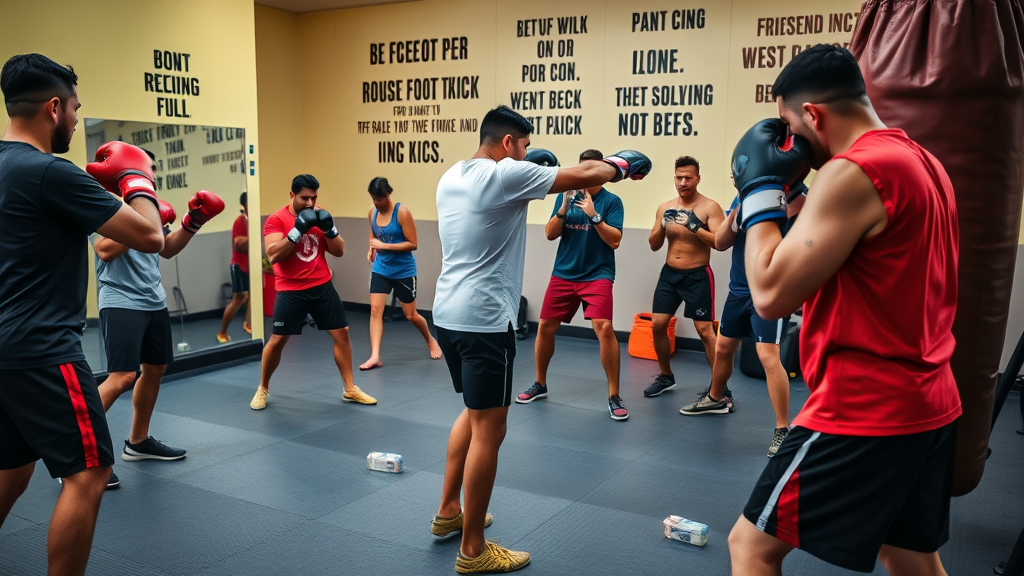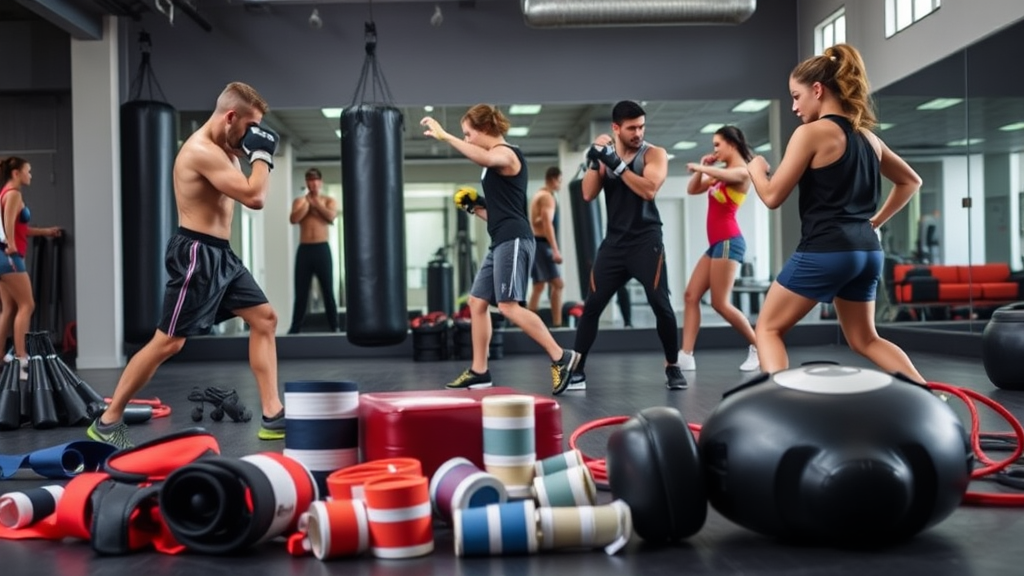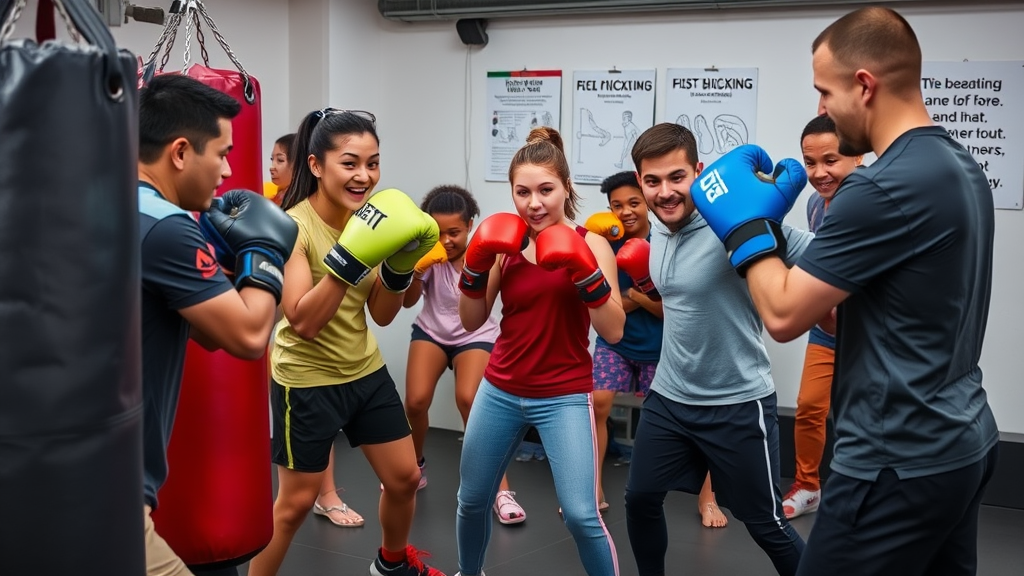When it comes to after-school activities, both martial arts and team sports offer great benefits. Each option brings its own unique advantages. Choosing between them depends on what you want to achieve for yourself or your child.
Key Takeaways
- Martial arts focus on discipline, respect, and self-defense.
- Team sports promote teamwork, friendship, and physical fitness.
- Both options boost confidence and skills in different ways.
- The right choice depends on personal goals and interests.
For those looking for structured activities that enhance mental and physical skills, exploring various youth sports programs can be beneficial.
Understanding the Basics
What are martial arts?
Martial arts like taekwondo and kickboxing teach self-defense. They help with discipline and respect. Students learn to work hard and stay focused. For kids, this can mean better grades in school. For adults, it can lead to stress relief and fitness.
What are team sports?
Team sports include games like soccer, basketball, and baseball. They focus on working together. Players learn to pass, share, and support each other. This builds friendships and a sense of community. Team sports also improve physical fitness and help with coordination.
| Martial Arts Benefits | Team Sports Benefits |
|---|---|
| Self-defense skills | Teamwork and cooperation |
| Builds discipline and respect | Creates lasting friendships |
| Enhances focus and concentration | Promotes physical fitness |
| Boosts confidence | Teaches competition handling |
The Benefits of Martial Arts
Discipline and Respect
In martial arts, students learn respect. They greet their instructors and bow before training. This helps build a strong sense of discipline. As they progress, they earn belts that show their hard work.
Self-Defense Skills
One of the main goals of martial arts is to teach self-defense. Students learn how to protect themselves. This knowledge can give students confidence in tough situations.
Focus and Concentration
Training in martial arts requires focus. Kids learn to pay attention during class. This skill can carry over to school. Many students find their grades improve as they learn to concentrate better.
Building Confidence
As students master new skills, they gain confidence. Each achievement, no matter how small, adds to their self-esteem. This can be especially helpful for shy children.
The Benefits of Team Sports
Teamwork and Cooperation
Team sports teach kids how to work with others. Players learn to communicate, share the ball, and support one another. These skills are important in school and later in life.
Making Friends
Playing on a team helps kids make friends. They bond over practices and games. This can create lasting friendships that carry into adulthood.
Physical Fitness
Team sports promote physical activity. Running, jumping, and playing keep kids healthy. It also helps with coordination and balance. Staying active is fun and helps kids stay fit.
Learning to Handle Competition
Being part of a team involves competition. Kids learn how to win and lose gracefully. This helps them handle challenges in life. They learn that effort is more important than just winning.
Key Skills Developed in Team Sports
- Communication: Players learn to express themselves clearly on and off the field.
- Problem-solving: Teams often face challenges that require quick thinking and strategic planning.
- Leadership: Opportunities arise for players to take charge and lead efforts during practices and games.
Making the Right Choice
Personal Goals Matter
When choosing between martial arts and team sports, consider what you or your child hopes to achieve. If self-defense and discipline are important, martial arts might be the way to go. If making friends and teamwork are the goals, then team sports could be better.
Age and Interest
You should also think about age and interest. Some kids might love the energy of a soccer game, while others might prefer the focus of martial arts. Let your child try both options to see which they enjoy more.
Time Commitment
Also, consider the time commitment. Martial arts classes often happen several times a week. Team sports might have practices and games on different days. Look at your schedule to see what fits best.
Local Options in Placentia
In Placentia, there are great options for both martial arts and team sports. For martial arts, Thrive7 Martial Arts offers classes for all ages. You can start as young as three years old. They focus on taekwondo and kickboxing while promoting respect and discipline.
For team sports, local schools often offer soccer, basketball, and more. Community centers also have leagues for different age groups. Check out the local parks and recreation website for more information on what is available. You can also explore options for after-school sports leagues that cater to different interests and age groups.
| Local Martial Arts Schools | Team Sports Options |
|---|---|
| Thrive7 Martial Arts | Local school soccer leagues |
| Placentia Karate Academy | Community basketball teams |
| Family Martial Arts | Youth baseball leagues |
Real-Life Experiences
A Parent’s Perspective
As a parent, you want the best for your child. I spoke with a mom from Placentia who chose martial arts for her son. She said, “He was shy and struggled making friends. Now, he is confident and has a great group of friends from class.” Many parents notice changes in their kids’ behavior and attitude. This can be a huge benefit of martial arts.
A Coach’s Viewpoint
A local soccer coach mentioned the importance of teamwork. He said, “Kids learn to rely on each other in practice. When they play a game, they feel like they are part of something bigger.” This sense of belonging can be powerful for kids who feel disconnected.
Challenges to Consider
Cost of Classes
Both martial arts and team sports may come with costs. Martial arts often have fees for uniforms and testing. Team sports might have registration fees and equipment costs. It’s important to look at your budget when deciding.
Time Management
Balancing school, homework, and sports can be tough. Kids need to manage their time wisely. Parents can help by creating schedules that allow for practice, homework, and family time.
Finding the Right Fit
Not every child will enjoy the same activity. If your child tries karate and doesn’t like it, that’s okay. Encourage them to explore different options until they find what they love.
Conclusion
Choosing between martial arts and team sports can feel tough. Both options provide important skills and benefits. Whether you choose martial arts for discipline or team sports for teamwork, the key is to find what fits best.
In Placentia, community options make it easy to give your child a chance to try both. They can build confidence, make friends, and learn valuable life skills.
So, get out there and explore what’s available. Your next great adventure in after-school activities awaits!
Final Thoughts
Remember, the goal is to help kids grow. Whether through martial arts or team sports, the important thing is to have fun. Encourage exploration, and let them find their passion. In the end, both paths can lead to a happier, healthier life.
